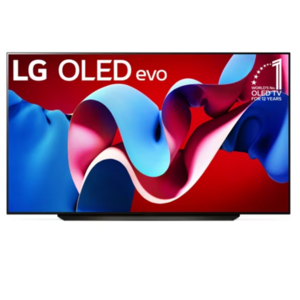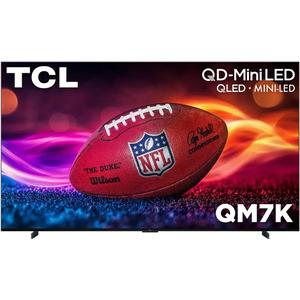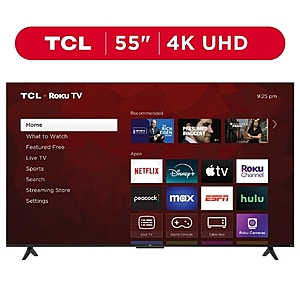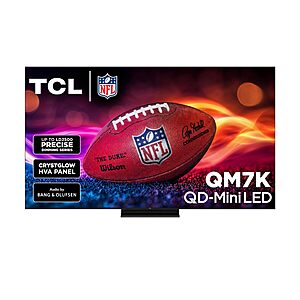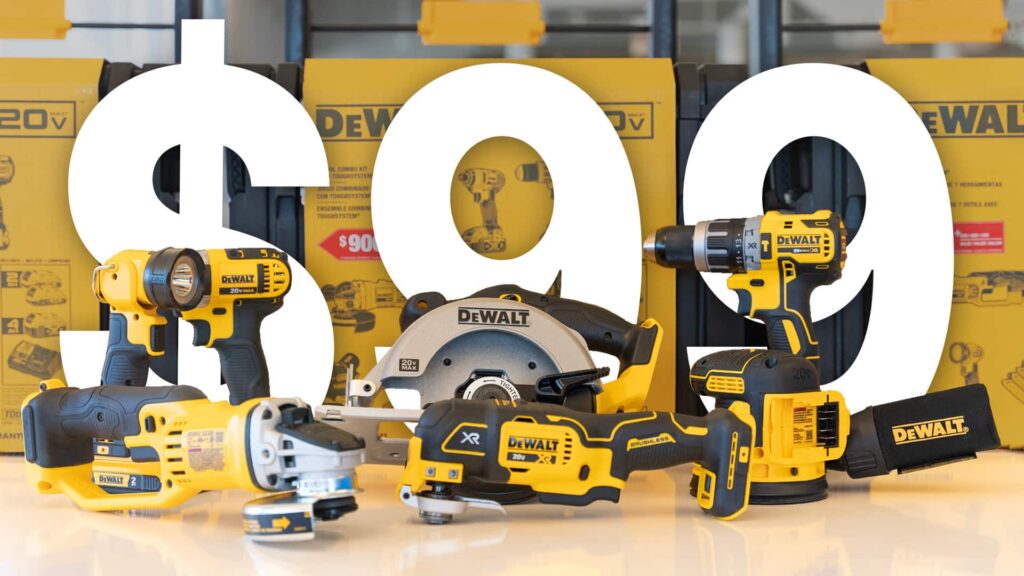Advertiser Disclosure: At Slickdeals, we work hard to find the best deals. Some products in our articles are from partners who may provide us with compensation, but this doesn’t change our opinions. Our editors strive to ensure that the information in this article is accurate as of the date published, but please keep in mind that offers can change. We encourage you to verify all terms and conditions of any product before you apply.
Reading Time: 7 minutesBuying a 4K TV can be a surprisingly complicated process. Check any online retailer’s catalog and you’ll be bombarded with hundreds of products, each claiming to offer an ultra-high-definition viewing experience and employ the latest, cutting-edge technology. You’ll also notice that 4K TVs come with radically different price tags—some can be had for as little as $350 while others run upward of $2,000, even when the screen sizes are comparable.
Those price tags indicate a very real difference when it comes to the product’s performance in your living room. Opt for a cheap 4K TV and you might experience washed-out colors, poor upscaling with non-4K content and a lack of ports to plug in your various electronics. Conversely, dropping $2,000+ on a 4K TV might give you expensive features that you’ll never use (or even be able to access).
If you’re interested in picking up a new big screen set, but are feeling a little intimidated by all the specs and ranges, we’re here to help pair you up with the best possible price point for your needs.
Top Deals on 4K TVs You Can Shop Now
Here are the top 4k TV deals posted on Slickdeals within the last 48 hours.
-
LG Partner Store 77 inch Class LG OLED evo C4 4K Smart TV 2024 OLED77C4PUA $1458 + tax
See Deal -
TCL 98″ Class QM7K Series 4K UHD HDR QD Mini LED Smart TV with Google TV (2025) 98QM7K $1,999.99 – $1999.99
See Deal -
TCL 55” Class S4 (55S451) 4K UHD HDR Smart TV with Roku TV $188
See Deal -
TCL QM7K QD-Mini LED 4K 144Hz Google Smart TV: 55″ $600, 65″ $800, 75″ $1000, 85″ $1500, 98″ $2000 + Free S/H
See Deal
Not all Pixels are the Same
When used to describe a TV’s display, the term “4K” refers to its resolution. Typically, a good 4K TV will have around four times as many pixels as an older “HD TV.”
This translates to a viewing experience that offers much more clarity in everything you watch. In short, the more pixels your TV has, the better your viewing experience will be.
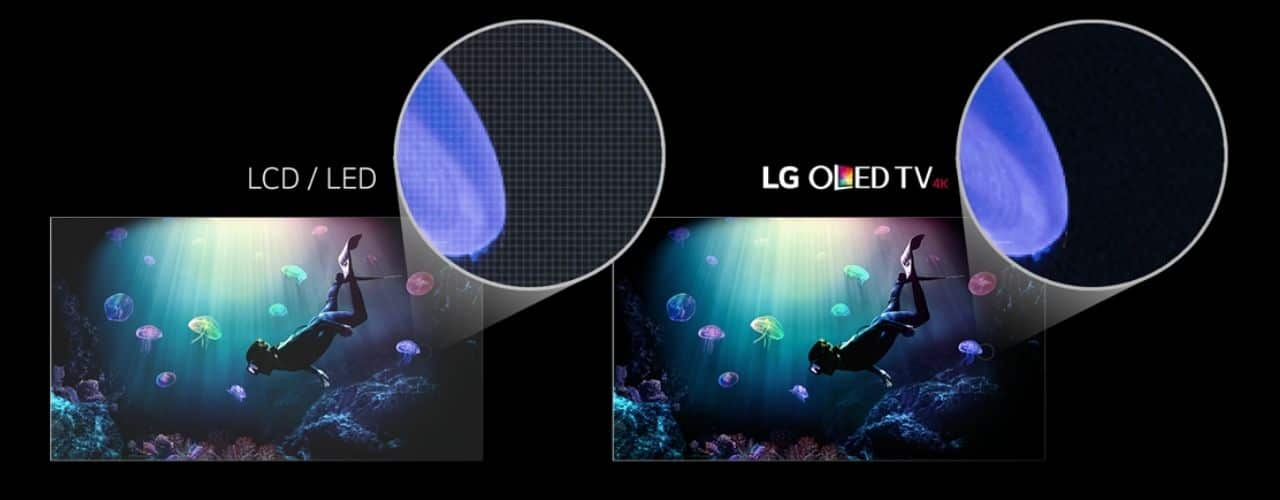
While even the most basic 4K TV will likely display a greater level of detail than a comparable HD TV, cramming millions of extra pixels into a television isn’t the end of the story.
Surprisingly, the pixels used in your TV are just as important as the resolution itself, since some offer a better viewing experience than others. There are big differences between the three main types of displays on the market – OLED, QLED and LED – but here are the basics:
- OLED: These monitors are typically seen as the best on the market. Deeper blacks, sharper images and vivid colors are hallmarks of OLED monitors.
- QLED: Usually seen as a step below OLED, these displays still offer an incredible viewing experience and are great for watching TV in a brightly lit room.
- LED: When manufactured by a reputable company, LED displays can come close to the quality of OLED. However, it’s rare to find an LED TV that looks better than an OLED counterpart.
Cheap 4K TVs will almost always come with an LED display, but that doesn’t necessarily mean you should cross it off your list. Instead, you’ll want to check to make sure it’s made by a well-known company such as Samsung, LG or Vizio—otherwise, you might be picking up a monitor with a poorly made display that results in a low-quality viewing experience.
For example, this 70″ LED TV from Vizio is currently on sale for just $679.99 and comes highly recommended from most on-site buyers. In contrast, this $448 70″ 4K LED TV from Onn might leave you with washed-out colors and sluggish performance. The two products might look similar on paper, but most consumers will find the Vizio product to be a smarter long-term investment.
Great Deals and Bonuses to Check Out from Slickdeals Money:
- New Southwest Credit Card Cardholders: Free Airfare With Major Points Bonus at Sign-Up
- Latest Bank Promotions and Checking Account Bonuses Being Offered This Month
If you’re feeling unsure, we always recommend you search for the model you’re interested in on our website. Our community of deal experts have put most budget TVs through their paces, so you can often find fantastic, first-person accounts about the one you’re considering by reading through some user comments.
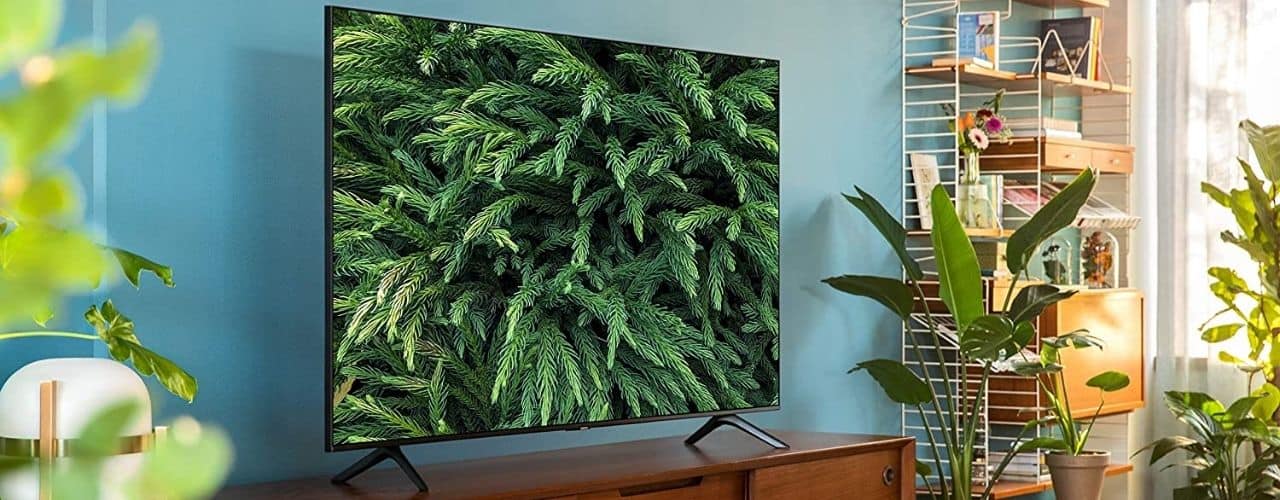
Bigger TVs Need Bigger Price Tags
While TV size won’t impact resolution, it will reduce pixel density. This means you’ll have fewer pixels per inch of screen—leading to images that may not be as vivid. If you’re purchasing a massive 85-inch TV, the quality of its display becomes radically more important than if you were picking up a smaller, 55-inch screen.
Because of this, we strongly recommended you avoid purchasing an inexpensive 4K TV that’s larger than 55 inches. While the above issues might not even be noticeable on a smaller TV, they will be readily apparent when spread thin across a sprawling screen.
Thankfully, 55-inches is still relatively big, historically speaking (back in 2010, Samsung’s largest TV capped out at 65-inches). Especially if your current set is under 42-inches, we think you’ll likely be blown away by a good, budget 55-inch set.
Anyone in the market for a really big-screen TV might be interested in this 85″ 4K LED TV from Samsung. It’s currently on sale for $1,997.99 (down from $2,000), and our deal experts are singing its praises. No doubt it’s on the more expensive side of the spectrum, but you’re getting a product that’s bound to give you years of incredible performance and we saw a recent deal that brought the price down to below $1,600.
Expensive TVs Offer More Than Just 4K
Beyond differences in display quality, expensive 4K TVs typically come with a host of subtle improvements compared to their budget counterparts. This might come in the form of more HDMI ports that are easily accessible, improved refresh rates for a smoother viewing experience or HDR compatibility that provides access to a wider range of colors.
Many of the above features will only matter to discerning viewers, so if your new TV will simply be used to watch sports on the weekend and the news in the evening, you can probably forego most of these extras. Another thing to consider: do you already have a 4K streaming device, Blu-ray player or game system? If not, nothing you watch will actually be in 4K, so you definitely will not benefit from the ultra-premium features mentioned above.
Related: Where to Find the Best Amazon Fire TV Stick 4K Deals

Similar Features, Different Performance
Even if you manage to find an inexpensive TV with a laundry list of features, that doesn’t necessarily mean it’s worthy of your money. The biggest differences between cheap and expensive 4K TVs typically come from better software and faster performance. While a $350 4K TV might come with Netflix pre-installed, it’ll load faster and provide a better user experience on a more expensive TV. The same goes for ports—a budget TV might tuck away its HDMI ports in awkward positions, while an expensive TV will have them readily available in an ergonomic position.
Then there’s the concept of upscaling, which turns non-4K content into something viewable on your 4K monitor. Much of the programming you consume daily is likely upscaled to fit 4K displays, and that process is all handled by incredibly complex software in your TV. Without diving into the weeds, rest assured expensive 4K TVs are much better at handling this process than those in a lower price bracket—resulting in a sharper image.
When you come across a shockingly good deal on a 4K TV, be sure to look up reviews before pulling the trigger. Everything might look great on paper, but its real-life performance could leave much to be desired. Once again, our community of deal experts is an excellent resource for finding real-life use case examples.
For an example of a high-end TV with an incredible spec sheet, look no further than this 77″ TV from LG. Not only does it have a 4K resolution and 120Hz refresh rate, but you also get HDR and a lightning-fast processor that supports AI-powered upscaling. Anyone who spends hours in front of a screen each day would have no complaints about putting this in their living room.

Which TV is Best for You?
Expensive 4K TVs will almost always perform better than their cheaper counterparts, but that doesn’t mean they’re a perfect fit for your home. When taking all the above into account, here’s the target audience for both types of TVs:
- Expensive TV: If you’re an avid video game, television or movie fan, you’ll strongly benefit from a fancy 4K TV. When you’re in front of a screen multiple hours each day it’s easy to notice its faults. Choose a cheap TV, and you’ll be left wishing for more.
- Cheaper TV: If you only watch a few weekly programs or tune in for the evening news, there’s not much of a reason to pick up an expensive 4K TV. Plenty of great TVs can be found in the $500 range and can often be purchased for much less during big sales.

Recent Deals and Discounts on 4K TVs
Regardless of your price range, there are a variety of great products at your disposal. Whether you’re searching for a high-quality 75″ 4K TV or a cheap set for your spare bedroom, these TVs won’t disappoint.
- LG 86″ Class 4K UHDSmart TV (2020 Model) – Recent Sale Price: $1,796.99 | Regular Price: $2,321.95
- TCL 75″ 5-Series 4K QLED Roku Smart TV – Recent Sale Price: $975 | Regular Price: $1,199.99
- Samsung 85″ Class TU8000 Crystal UHD 4K Smart TV – Recent Sale Price: $1,799.99 | Regular Price: $1,999.99
- LG OLED 77CXPUA 77″ CX 4K Smart OLED TV – Recent Sale Price: $3,296.99 | Regular Price: $4,999.99
- LG 55″ 4K UHD Smart TV – Price: $393
Tips for Buying a 4K TV
We’ve put together an extensive guide about finding great deals on 4K TVs, but here are a few of the highlights.
- Wait for a sale: Prices typically drop as we approach the end of the year, with your best savings around Black Friday. There are also periodic sales throughout the year – such as after the Super Bowl when retailers try to off-load any products they didn’t sell before the Big Game to make room for upcoming models.
- Buy from a well-known manufacturer: It’s possible to get lucky with an off-brand, but big names such as LG, Samsung, Vizio and Sony are known for their quality regardless of price. While this might mean paying more upfront, nothing is worse than having a TV break after just a couple years of use. And don’t even get us started on partial breaks like burn-in or dead pixels; you’ll be forced to choose between living with an imperfect picture and shelling out hundreds of dollars all over again.
- Don’t buy into the jargon: Don’t get discouraged by marketing buzzwords you’re unfamiliar with. Check the price tag, look to see if it’s an LED, QLED or OLED TV, make sure it’s the right size for your room and look for a few features mentioned above. Beyond that, most of the other features are secondary. Even if your new TV doesn’t have Netflix built-in, a streaming device costs like $15 when it’s on sale.
- Consider accessories: To make the most of your fancy 4K TV, you’ll probably want to pick up a good soundbar. While all TVs come with built-in speakers, you can take your setup to the next level by investing in a high-quality sound system.
Also, make sure to set up a Deal Alert and we’ll let you know of any new sales on 4K TVs.
More from Slickdeals:


